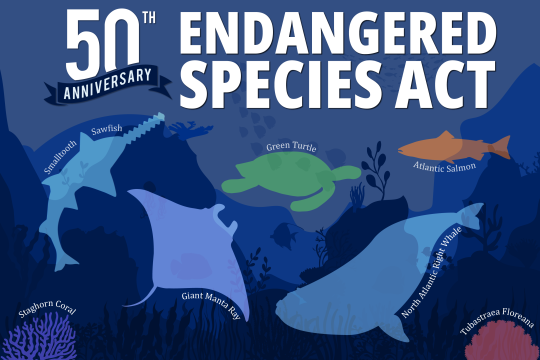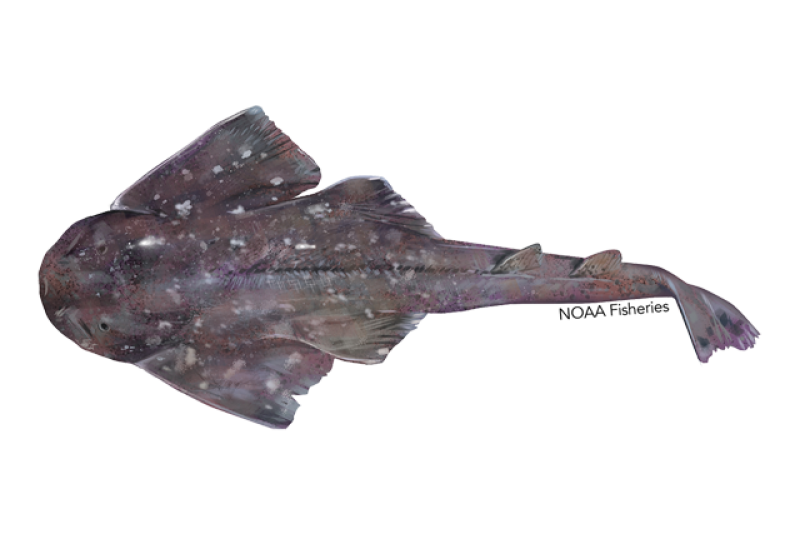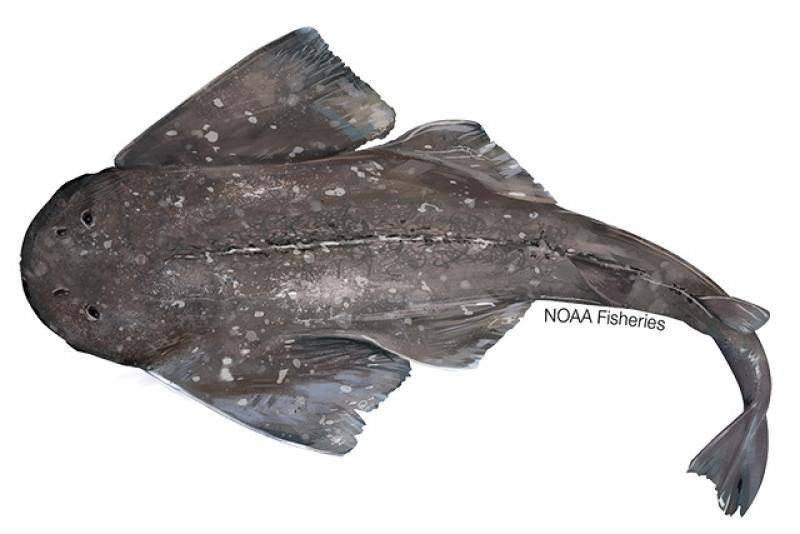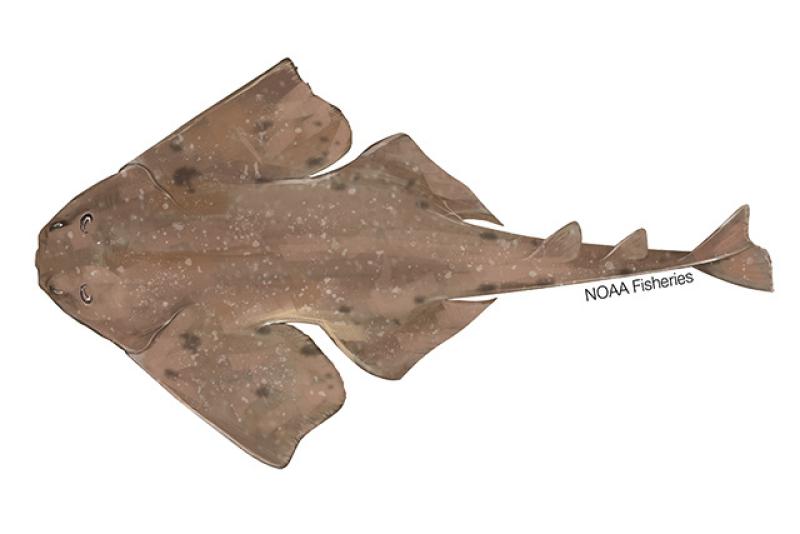About the Species
The spiny angelshark is a cartilaginous fish similar to a ray or skate. They occur in the Southwest Atlantic from Brazil to Argentina. The spiny angelshark represents the most commonly caught angelshark species in numerous fisheries operating throughout its range. As such, the main threat to the spiny angelshark is bycatch in commercial and artisanal fisheries. The spiny angelshark has suffered significant population declines, including a 36 to 47 percent decline in biomass within the Argentina and Uruguay Common Fishing Zone and an 85 percent abundance decline in waters off Brazil, with the possible extirpation of a local breeding population. In 2017, NOAA Fisheries listed the species as endangered under the Endangered Species Act.
Appearance
Angelsharks are recognized by their batoid shape (similar to a ray or skate). The spiny angelshark can be distinguished from other angelsharks in the region by the presence of a median row of spines or tubercles on its back. There are 30 to 35 spines, which are short, conical, and slightly recurved, between the head and the first dorsal fin. The dorsal skin is light to dark brown with several white or creamy-white to yellowish large, rounded blotches that are variable in size and symmetrically distributed on the entire dorsal surface.
Behavior and Diet
Spiny angelsharks are ambush predators, meaning they lie in wait for prey to pass closely overhead before attacking. They prefer to eat bony fish but will also feed on crustaceans, molluscs, and polychaetes.
Where They Live
The spiny angelshark is found in the southwestern Atlantic Ocean from Rio de Janeiro, Brazil, to south of Rawson, Argentina. It is a primarily coastal, bottom dwelling angelshark, preferring depths between 26 and 33 feet and occurring in temperatures between 50 °F and 72 °F. The species lives in muddy or sandy bottom substrates and is relatively inactive during the day. This nocturnal activity makes the spiny angelshark more vulnerable to gillnet fisheries, which tend to operate at night.
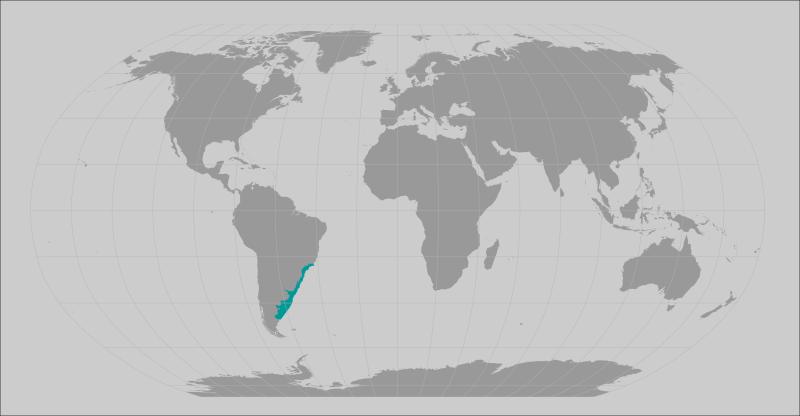 World map providing approximate representation of the spiny angelshark's range.
World map providing approximate representation of the spiny angelshark's range.
Lifespan & Reproduction
Little is known about the growth and reproduction of spiny angelsharks. The female reproductive cycle is thought to be triennial, with a gestation period that likely lasts 12 months. Gestation begins in the summer (January to February in the Southern Hemisphere) and pupping occurs the following spring (November to December) in depths of less than 66 feet. Litter sizes for the species range between 2 and 8 pups. After pupping, juveniles will remain in the shallow waters for one year before migrating out to the continental shelf.
Threats
Artisanal and Commercial Fishing
The primary threat to the spiny angelshark is overutilization in artisanal and commercial fisheries. In Argentina, the spiny angelshark is considered a valuable bycatch species in the multispecies artisanal shark fisheries. In Uruguay, spiny angelsharks are both targeted and caught as bycatch by industrial trawling fleets in coastal and offshore waters. In Brazil, spiny angelsharks have been heavily exploited by industrial trawlers and gillnet fleets since the 1980s. This intensive fishing pressure throughout the species’ range likely caused population declines of significant magnitude since the 1980s.
Scientific Classification
| Animalia |
Chordata |
Chondrichthyes |
Squatiniformes |
Squatinidae |
Squatina |
guggenheim |
Last updated by NOAA Fisheries on 10/30/2023


